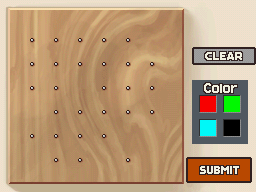(Originally sent March 2010, maybe)
Video
ChatRoulette is a fascinating site whose mission is simply to connect you to a random person to video chat with. This is just as good and bad an idea as it sounds. I don’t recommend visiting (particularly if you have a webcam active as it will attempt to throw you into a random encounter immediately) but I do recommend reading about it.
It turns out to be a great environment for improv performance as shown in this video (sound essential, 5’28” long but the first 40” gives you the idea):
I’m fascinated by the extent to which people respond silently – and contrast this with how we usually provide feedback to a musical performance. There’s some very interesting human-machine-human interface stuff going on here.
Link
Sometimes an aesthetic is a byproduct of technology – high contrast in over-reproduced 6”x10” glossy star photos, inconsistent speed in old black and white film, the depth and colour range in Polaroid photos, or the way 80s TV series look rubbish. Digital processing grants a whole new level of control over colour and the ability to choose from a vast range of possible palettes, but the result seems to be that everyone is doing the same thing. This is quite likely how films made in the last ten years will reveal their age when we look back on them ten years from now.
Quote
(via Tim Connor)
Marin Alsop: “Tradition is simply the last bad idea”
Picture
Free Will.
This weeks’ puzzle
Many years ago Nick challenged me to work out how to tell where the doors of a London Underground tube carriage would stop on the platform so that you could optimise where to stand to improve your odds of boarding first and so getting a seat. I came up with an answer that didn’t work terribly well but assumed that was what he had in mind (without ever confirming it). Only now after 5 months of catching 4 tube trains every workday have I realised a much better solution.
What do you think my first and second solutions were?
Last week’s puzzle
Why are calculator and phone keyboards laid out oppositely? There doesn’t seem to be a definitive answer, but there are a few very likely suspects.
The original decisions that led to 123 being at the bottom for calculators are unclear. Thomas suggests it’s a matter of “where your attention is coming from” – combined with Benford’s law I suspect this could be a key factor driving the layout of the first common mechanical number-entering devices, cash registers, and how devices evolved from there.
When it came to phone pads, it seems (remarkably for this kind of thing) that AT&T actually did some user testing and found the 3×3 grid with 123-at-the-top was the easiest for people to master. As letters were also a consideration in those days, putting ABC with 1 (and so on) made most intuitive sense, and would have looked pretty bizarre had 123 been at the bottom.
My preferred write-up of possible answers comes from The Straight Dope.
Various other attempts to answer this question are curated here.
Richard also points out the following (my summary of his words [my comments in square brackets]):
Handedness is a consideration for other aspects of the layout; in particular computer keyboard number keypads, which sit on the right-hand side, are supposed to be operated with the left hand [a revelation to me after years of feeling slightly odd using my little finger to press the return key], and an interesting challenge emerges when one keyboard is used for both data-entry/calculation and telephone operation, as with Skype today, or the over-prescient One-Per-Desk in 1984.


